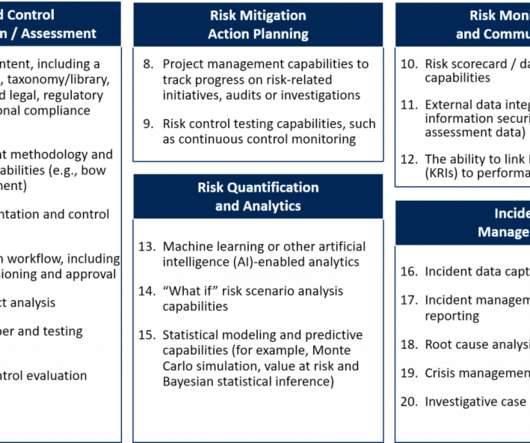20 for 20: IRM Critical Capabilities & Top 20 Functions / Features
John Wheeler
OCTOBER 20, 2020
We continue our “20 for 20” theme this year by highlighting the integrated risk management (IRM) critical capabilities and top 20 software functions / features. These five capabilities support both integrated view of strategic, operational and technology risk as well as the related business outcomes, processes and assets.

















Let's personalize your content